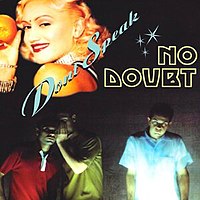Piano Sheets > No Doubt Sheet Music > Don't Speak (ver. 5) Piano Sheet
Don't Speak (ver. 5) by No Doubt - Piano Sheets and Free Sheet Music

About the Song
Other avaliable versions of this music sheet: Version 1 Version 3 Version 5
"Don't Speak" is a song by the American rock band No Doubt. It was released as the third single from the band's second album Tragic Kingdom (1995) in 1996.
Despite the song's popularity, "Don't Speak" did not chart on the Billboard Hot 100 (as rules of the times required commercial singles for charting and one was not issued for the song), but it did reach number one on the Billboard Hot 100 Airplay and stayed for sixteen weeks. The song also reached number one in the UK, New Zealand, Netherlands, and Australia. The single is No Doubt's most successful international single, propelling them to superstardom. "Don't Speak" is arguably No Doubt's biggest hit and was nominated for the Song of the Year and Best Pop Performance By A Duo Or Group With Vocal at the Grammy Awards of 1998.
The song was ranked at number 495 in Blender magazine's "The 500 Greatest Songs Since You Were Born". No Doubt is.
Download this sheet!
About the Artist

Random article
How to enhance sight-reading for piano sheet music If you want to learn how to play, the piano in a live performance impromptu then you need to improve your sight-reading of sheet music. Chances are you will have to play music notes, which are unfamiliar.
Picking it at random
One of the best ways to enhance your sight-reading of piano notes is to pick any book randomly and start playing. Ideally, you want to start playing these musical notes from the first page and continue until you reach the very end. The trick is to be stern with yourself and not stop playing until you reach the last page of the sheet music.
(More...)
